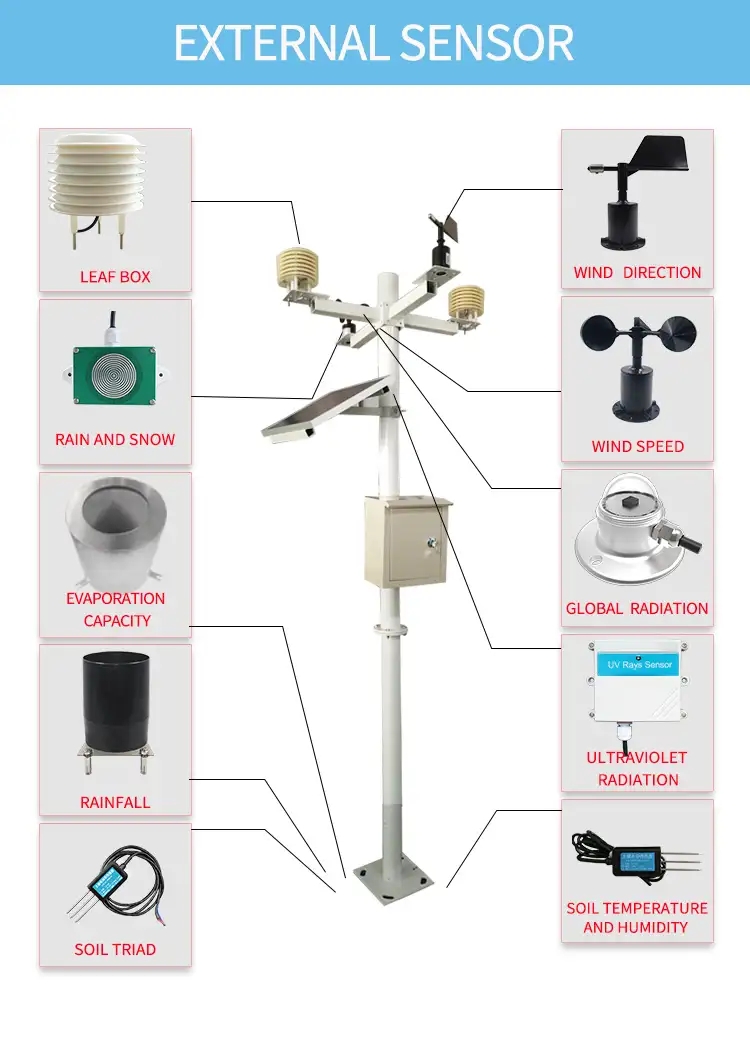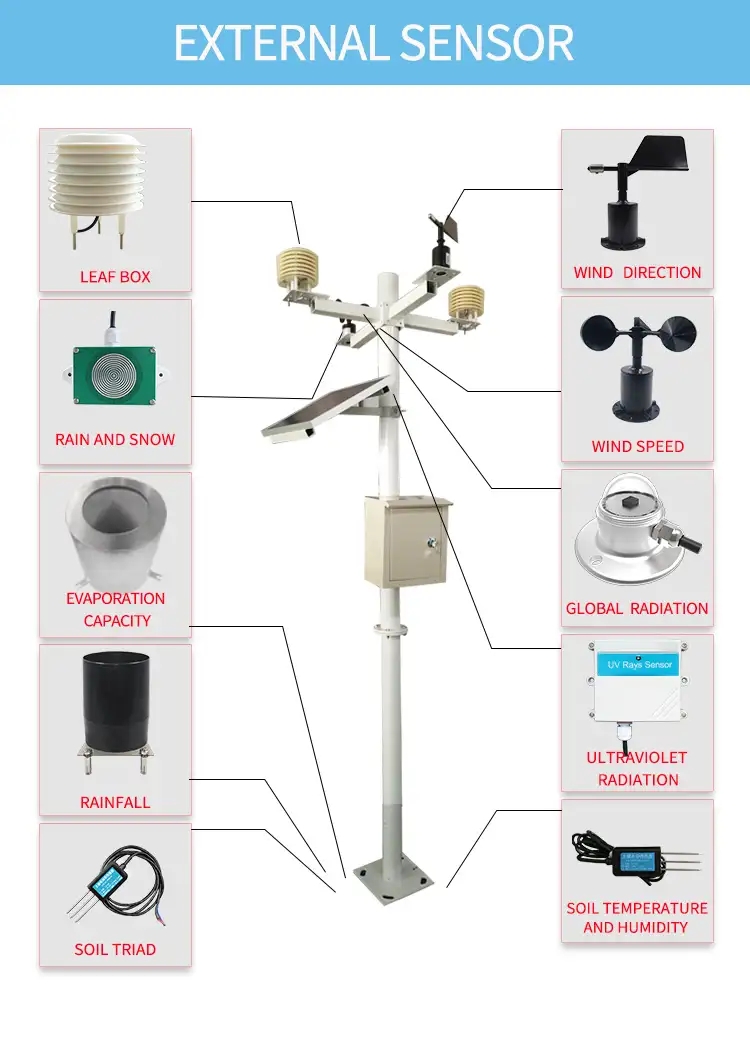Types of meteorological sensors and their use
Until the 18th century, people completely relied on sensory observations of any weather data, that is, they learned the wind direction through the movement of leaves, or estimated the time of rain through the number of clouds in the sky. Now, times have changed. Today, we use IoT technology to develop different weather instruments and weather stations to help us accumulate accurate weather data. Next, let’s take a look at some meteorological sensors.
There are different types of weather instruments to measure different parameters. For example, atmospheric pressure is measured by a barometer, and a temperature and humidity sensor monitors temperature and humidity. Let's talk about the different weather sensors used to measure weather and climate and their use.

1. Temperature and humidity sensor:
Sometimes we feel hot, sometimes cold. This happens due to temperature changes. Through the feeling of cold and heat, we can judge whether it is summer or winter, but to know the exact temperature, we need a device, which is a temperature and humidity sensor. A temperature and humidity sensor is a device used to measure temperature or humidity. Temperature and humidity sensors can be used in industry, meteorology, and even medicine or indoors.
2. Atmospheric pressure sensor
The atmospheric pressure sensor is an instrument that measures atmospheric pressure. It measures the pressure of a measuring cell called a bar or atmosphere. The earth is surrounded by a layer of air, which is called the atmosphere. Air has weight, and it presses everything on gravity. The atmospheric pressure sensor measures this pressure. When the pressure sensor shows low pressure, it means the weather is rainy, windy or cloudy, and when the pressure is high, it means the weather is fair.
3. Wind direction sensor
The wind direction sensor is also called a digital wind direction sensor or air volume sensor. This is an instrument used to display wind direction. The wind direction sensor is located on the top of the weather station. The weather station provides accurate results about the speed direction, thereby providing a lot of information about weather changes.
4. Automatic rainfall sensor
The meteorological rainfall sensor is an instrument used by meteorologists to measure the amount of precipitation over a period of time. They are one of the instruments present in most weather stations. The sensor for measuring rainfall must be placed in an open area with no obstacles.
Meteorological instruments such as temperature and humidity sensors, atmospheric pressure sensors, rainfall sensors, wind speed and direction sensors are the basic instruments of each weather station. With these weather measuring instruments, we can obtain accurate weather data, identify even the smallest changes in the cold, and may be aware of any natural disasters.






